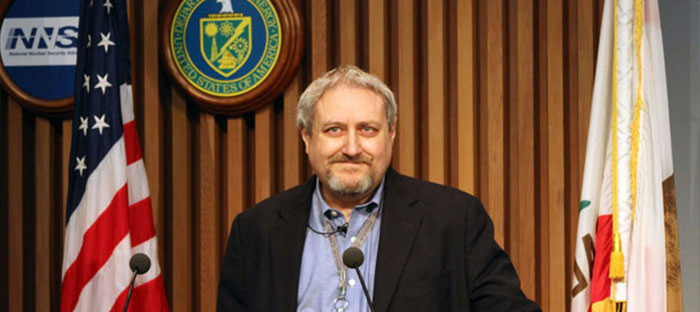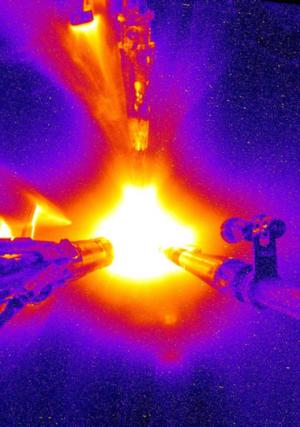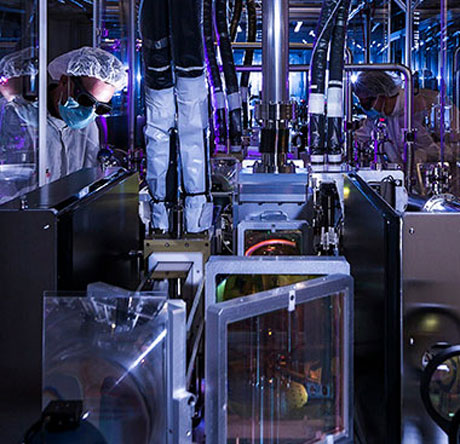Introduction to the LLNL FY 2017 Annual Report
Lawrence Livermore National Laboratory (LLNL) applies world-class science, technology, and engineering (ST&E) to enhance national security in a rapidly changing world. This enduring mission for the Department of Energy (DOE) and its National Nuclear Security Administration (NNSA) requires vigilance, innovative thinking about emerging threats, and productive partnerships with industry, academia, and government. This annual report highlights our many successes this year in making the nation—and the world—safer and more secure.
In fiscal year 2017, LLNL excelled in every respect—mission, ST&E, and operations. In keeping with our “Science and Technology on a Mission” motto, the Laboratory realized one of the most exceptional years in recent memory. Our continuing success depends on people who bring forth new ideas, work with integrity and zeal, and thrive in an inclusive work environment.
Our Laboratory’s defining mission is nuclear security. Livermore is a major contributor to DOE/NNSA’s Stockpile Stewardship Program. We made important progress during the year in extending the stockpile life of the W80-4 warhead for the U.S. Air Force’s Long-Range Standoff missile. In this effort, we are exploring ways to take advantage of 3D printing to make parts with optimized properties at lower costs and with shorter production schedules.
We are also advancing the experimental and computational capabilities needed to assess the condition of weapons in the stockpile and certify changes made to extend their life. High-energy-density physics experiments at the National Ignition Facility (NIF) are providing crucial data for stockpile stewardship. LLNL scientists have also achieved record-setting neutron yields in inertial confinement fusion ignition experiments that continue our progress toward demonstrating ignition and a burning plasma.
Leading-edge high-performance computing (HPC) is essential to success in stockpile stewardship and breakthroughs in many other mission areas. Delivery of Sierra promises a four- to six-fold performance improvement over Livermore’s most capable supercomputer, Sequoia. Laboratory scientists are also providing leadership in DOE’s Exascale Computing Project and working to prepare the Livermore site for an exaflop computer in 2023. In addition, we are supporting efforts by national security sponsors to extract information from enormous amounts of data.
Our annual report also highlights experiments and modeling aimed at improving capabilities to detect low-yield nuclear events and to better prevent and respond to terrorism involving weapons of mass destruction. LLNL completed development and delivery of HAPLS, the world’s most advanced and highest average-power laser system. We launched a partnership with academia and industry, the ATOM consortium, that applies the Laboratory’s HPC capabilities to dramatically accelerate the drug discovery process. Our researchers are achieving a deeper understanding of 3D printing, which they are applying to new types of materials. In addition, seven R&D 100 awards and prize-winning work under the aegis of DOE’s HPC for Manufacturing Program testify to LLNL’s continuing success in technology transfer.
As our annual report highlights, Livermore is also strengthening safety and security, investing in infrastructure to upgrade and enhance the quality of our workplace, and taking innovative approaches to modernize the nation’s nuclear weapons complex.
LLNL celebrated its 65th anniversary in 2017. Our founders began operations on September 2, 1952, with the goal of serving the nation as a “new ideas” laboratory. Our many accomplishments this year show that we continue to deliver innovative, world-class science and technology to meet the difficult security challenges our nation and the world face.








